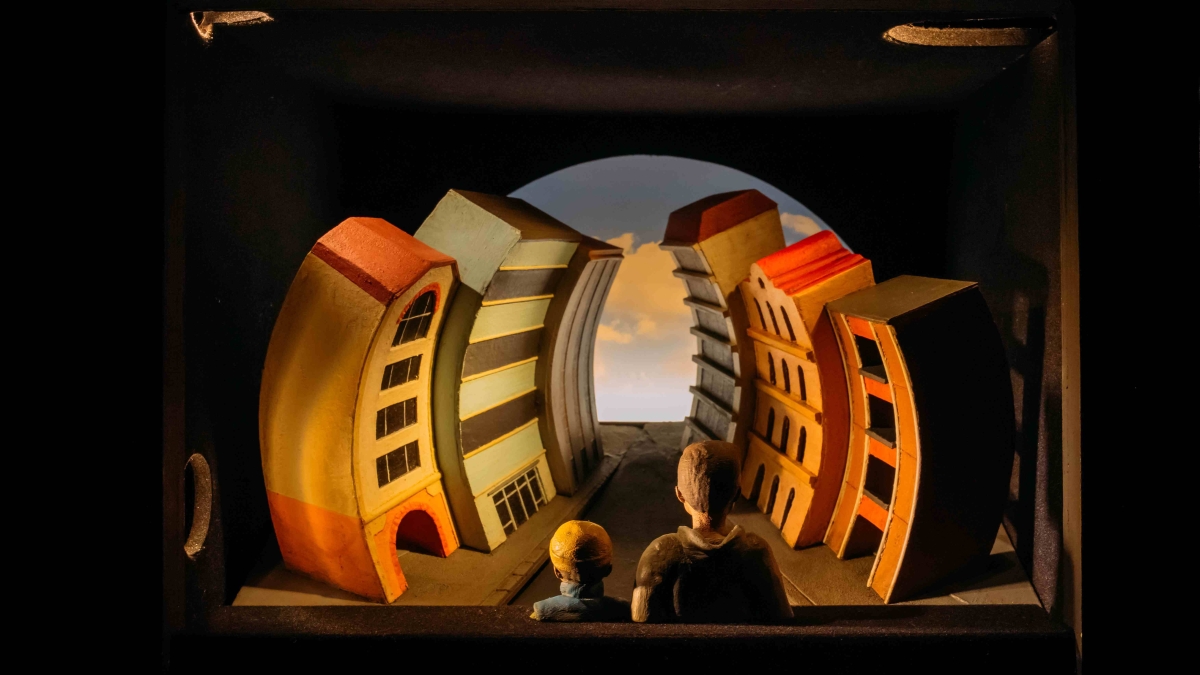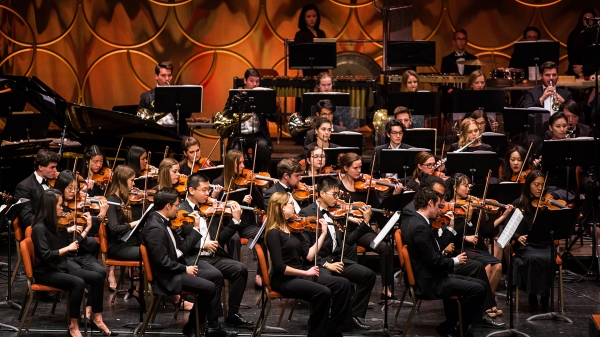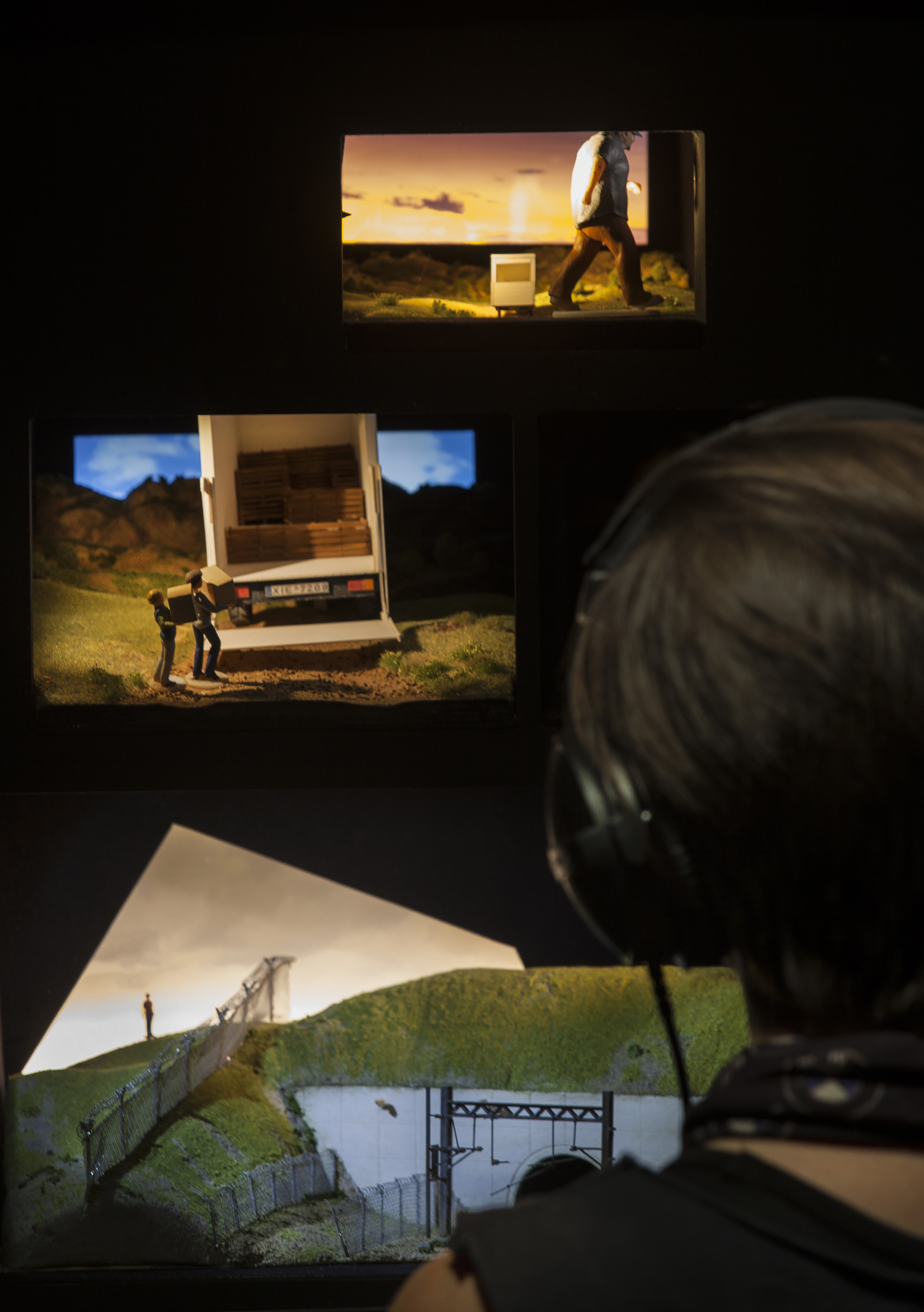'Flight' tells the story of two refugee boys through a unique audience experience
The show comes to Tempe Center for the Arts in collaboration with ASU Gammage Jan. 17–Feb. 1

Inside one of the dioramas for "Flight."
Painted plastic figurines and 225 boxes. Voices through a pair of headphones. A performance with no live actors, no distractions and no light except for the one illuminating the box. "Flight" brings the audience along for the journey of two Afghan boys’ quest for refuge through a groundbreaking new way of storytelling.
"Flight" was created by the Scottish company Vox Motus and gained nationwide recognition at the Edinburgh International Festival in 2017 when it won the Herald Angel Award. The show is co-directed by Candice Edmunds and Jamie Harrison, magic and illusion designer for “Harry Potter and the Cursed Child.”
The show will be making its way to Tempe Center for the Arts in its collaboration with ASU Gammage from Jan. 17 through Feb. 1.
Edmunds and Harrison developed "Flight" based on Caroline Brothers’ novel “Hinterland,” which follows the highs and lows of Aryan and Kabir’s journey from war zone to safety.
Harrison said he and Edmunds wanted a story that dove deeper into the refugee crisis than the facts and figures. “Hinterland” did just that.
“We found the story very moving and wanted more people to experience it,” Harrison said. “It was something that we wanted to bring to life theatrically.”
In order to translate the same compelling message from paper to production, the two co-directors set out on their own journey to Paris. There, they met the children who made similar excursions the two young brothers made in the novel.
“While the journey may change and the specifics for each individual migrant situation might be slightly different, the thing that is universal about Aryan and Kabir are those thoughts and feelings that we examine in 'Flight,'” Harrison said.
What captured Harrison’s heart was not only the stories of the young boys who ventured across continents, but the feelings that remained afterward.
When Edmunds and Harrison arrived at the scene where the boys lived, they were playing soccer.
“They are having an extremely difficult time in their life and they have suffered great hardship, yet still they will have a giggle and knock around,” Harrison said. “It’s very inspiring.”
Still hopeful, still joyous. Harrison said the young boys played on the field, despite the language barrier separating many of them.
The two directors made it a goal for "Flight" to depict not only the troubles of the boys, but to represent the hopeful and jovial nature that coincides with being a boy on the cusp of adolescence.
From there, the “narrative diorama-scope,” as Harrison calls it, was born.
Dioramas for the show "Flight.
The unique structure of the show was inspired by the interest of a diorama model used for a previous show Edmund and Harrison were working on.
“We thought ‘That’s a really interesting perspective,’ to put Aryan and Kabir in front of an audience as two fragile little characters traveling through the vast world,” Harrison said. “We really felt that this idea that we came up with would allow us to do justice to the epic writing in Caroline’s novel.”
For the show, audience members are subject to their own space — a small nook with two walls that block them from the person on the other side. There are 25 seats. The dioramas rotate around a carousel and are lit once in front of the viewer to tell the story. Viewers have headphones that serve as a voiceover for the scene on display.
“People buy a ticket because they want to see the revolving models, and they come out talking about the boys,” Harrison said. “We think that is our greatest achievement.”
Overall, the fresh take on theater and the rich story of the brothers’ escape to safety has taken the world by storm on its national tour.
“No matter where you take this piece, people react very strongly to it because we are all human beings who can empathize with people who are having a difficult time in their lives,” Harrison said.
More Arts, humanities and education

Small presses dealt big blow
A mighty rumble reverberated throughout the publishing industry late last month with the abrupt closure of a well-known book…

'Living dress' wins Eco-Chic sustainable fashion contest
When Elena Marshall is done showing off her award-winning “living dress,” she’ll bury it in her backyard. The dress, a chic…

ASU Symphony Orchestra welcomes visionary conductor Jonathan Taylor Rush
Guest conductor Jonathan Taylor Rush will join Arizona State University’s Jason Caslor, director of bands, to lead the ASU…
